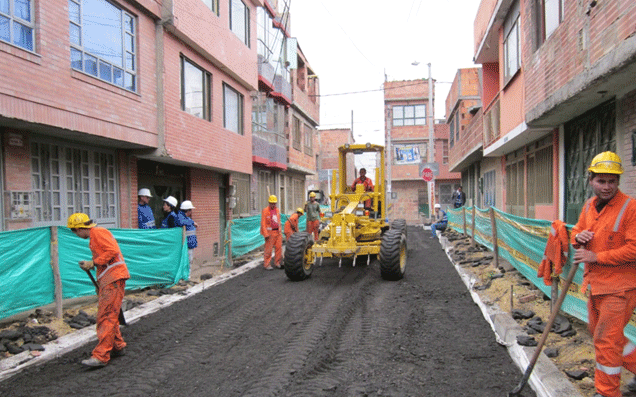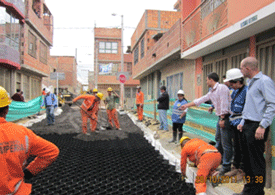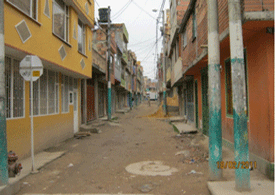Reinforced Recycled Asphalt Pavement Rehabilitates Roads
Neoloy®Geocells provided ideal solution to reinforce recycled asphalt pavement, significantly increasing modulus, saving costs.


The Institute of Urban Development (IDU) of Bogota decided to rehabilitate run-down road infrastructure. The plan called for reclamation of large existing stockpiles of waste asphalt collected from resurfacing programs to repave the streets. However, the low strength of the reclaimed asphalt (200-300 MPa) required processing to improve its modulus (to 900 MPa) for use in conventional pavement design.
After consulting with the geosynthetic experts at Pavco Geosystems and PRS engineers on-site, Incoplan SA engineering consultants were convinced of the suitability of cellular confinement systems for RAP, despite any prior familiarity with geocells.
Although permanent deformation or rutting is one of the concerns in the use of RAP as a base course due to creep deformation, Incoplan engineers learned that the lateral confinement provided by Neoloy Geocells to granular materials would significantly reduce creep deformation of RAP. In particular, the engineers were impressed by the high-modulus performance of the Neoloy Geocell, based on novel polymeric alloy, which has been tested and proven in studies and field trials around the world.

Conventional Solution
Conventional use of RAP required processing with bitumen to improve strength in reclaiming the existing milled asphalt. This increased hauling costs to the asphalt processing facility, as well as indirect costs, such as pollutants, energy and bitumen used in the processing.
The conventional pavement design proposed 4 layers of 15 cm processed RAP for a combined 60 cm base/subbase, with a new asphaltic concrete wearing course of 8.4 cm thickness.
However, tests comparing unconfined vs. PRS-Neoloy-confined RAP in the base of pavements carried out under Dr. Jie Han of the University of Kansas show that the unconfined RAP is subject to significantly higher creep deformation resulting in permanent surface deformation and rutting.
Neoloy Geocell Solution
Unprocessed RAP was used as infill in the Neoloy Geocell reinforced base layer, comprised of 12.5 cm height Neoloy 330 size cell plus 5-8 cm overfill (depending on each street alignment). The same unprocessed RAP was also used for the 30 cm subbase infill as well. The wearing course was a new 8.4 cm asphalt layer.
The Neoloy Geocell reinforcement mechanism (Modulus Improvement Factor – MIF) increased the existing low strength infill from 200-300 MPa to 1000 MPa modulus for the existing milled asphalt stock RAP infill without processing.
These savings enabled the contractor to increase the number of streets in the rehabilitation. The improved modulus of RAP also enabled a reduction in the overall thickness of the pavement structure. In addition to the 10% net savings, the project construction was faster as excavation, infill and compacting were all reduced.
The municipal road authority, the engineering consultants and the contractor were all so satisfied that the program is being extended to another 50 streets.
Click here to read more about the RAP solution.
Client Benefits
- ~40% net cost savings in project
- Eliminate hauling to/from processing facility
- Less excavationon
- Reduced layer thickness
- Increase in the number of roads to be rehabilitated, due to the reduced RAP used
- Faster installation and reduced man- and equipment hours
- Innovative sustainable technology
- Long lifespan
